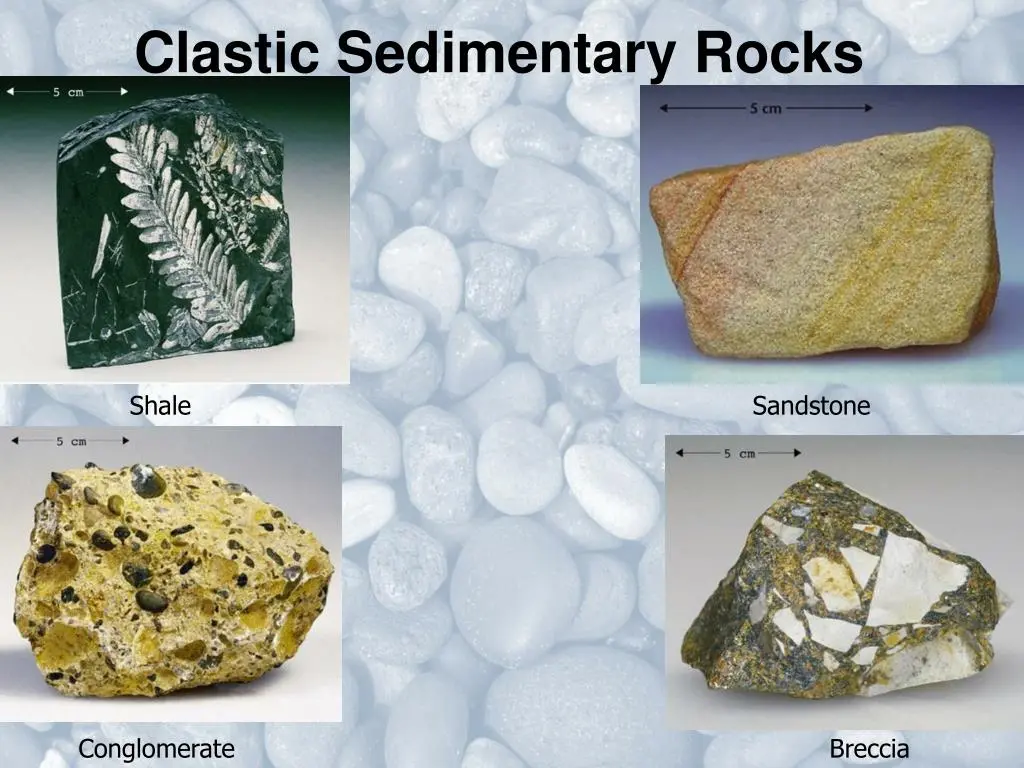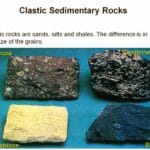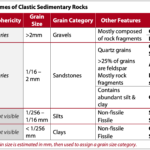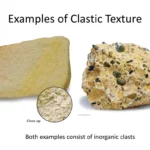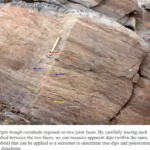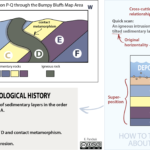Buckle up, folks! We’re about to dive into the fascinating story of clastic rocks, the foundation of our energy world. These rocks are like tiny puzzle pieces, made up of bits and pieces from older rocks. But don’t let their humble beginnings fool you – they hold a secret that’s shaping our present and future: they’re the treasure chests where we find oil and gas. As we uncover the geological secrets that formed them, we’ll see how they’ve played a starring role in creating the world we live in and the energy that powers it.
Economic Importance of Clastic Rocks
Clastic rocks, those made from bits and pieces of other rocks, are like the unsung heroes of our economy. They’re used to build our homes, roads, and bridges. They also play a big role in energy production, providing the fuel that keeps our lights on and our cars running.
Building Blocks of Our Infrastructure
Clastic rocks – like sandstone, limestone, and shale – are the backbone of our construction industry. They’re used in everything from skyscrapers to sidewalks. Their strength and durability make them ideal for building structures that can withstand the test of time.
Fueling Our Energy Needs
For centuries, coal has been our go-to source of energy. And guess what? It’s often found hanging out with clastic rocks. These rocks act like underground vaults, storing the organic matter that eventually becomes coal.
But that’s not all. Clastic rocks are also hiding places for oil and gas. Their porous structure lets these liquids flow easily, making them ideal reservoirs for these precious resources. By studying these rocks, energy companies can find these hidden treasures and extract them safely and efficiently.
Reshaping Land Use Decisions
The way clastic rocks hold water is also something we need to consider when planning our cities and towns. Their ability to trap and release water can affect the flow of groundwater and the stability of the ground. So, geologists make sure to study these rocks carefully before we build on or near them.
The Importance of Collaboration
We can’t underestimate the value of collaboration between geologists and other professionals. By sharing their knowledge of clastic rocks, they help us make informed decisions that balance economic development with the protection of our environment.
If you are interested in the clastic sedimentary rocks, you can learn all about their types and other characteristics. You can also learn about the processes that led to the creation of the rocks through Weathering and erosion processes. The Sediment transport mechanisms that led to the formation of these rocks are also discussed in great detail. The Diagenesis and lithification processes that turned the sediments into rocks are also covered here. The Sedimentary facies and sequences that are found in these rocks are also discussed here. You can also learn about the Provenance analysis of clastic sediments and the Clastic rock classification systems that are used to classify these rocks. The Texture and composition of clastic sedimentary rocks are also discussed here. You can also learn about the Clastic dikes and other soft-sediment deformation structures that are found in these rocks. The Paleocurrent indicators in clastic rocks are also discussed here.
What are the different types of clastic rocks and their everyday uses?
You’re probably familiar with the mighty mountains that tower over us. Did you know they’re not just solid rock, but a patchwork of different types of rocks? Some of these rocks are formed from broken pieces of older rocks, like a giant jigsaw puzzle. These are called clastic rocks, and they come in various sizes and textures.
Meet the Family of Clastic Rocks
Imagine a pile of rocks. Now, break them down into smaller pieces. The bigger ones, over 2 millimeters in size, are called conglomerates. They’re like a chunky mosaic, with rounded pebbles and rocks glued together. If the pieces are sharp and angular, we’ve got breccias. They look like a shattered mirror, just coarser.
Then, there are sandstones. They’re like coarse sand, with grains ranging from half a millimeter to 2 millimeters. They’re a common sight in beach cliffs and canyon walls.
Next up, siltstones. Imagine tiny particles, like flour, but still visible under a microscope. These particles are between 4 and 62.5 thousandths of a millimeter. And finally, we have mudstones and shales. They’re the tiniest of them all, less than 4 thousandths of a millimeter in size. They’re like fine clay or mud that has hardened over time.
The Handy Uses of Clastic Rocks
Just because they’re broken doesn’t mean they’re useless! Clastic rocks play a vital role in our everyday lives.
- Building Blocks: Conglomerates and sandstones are like the bricks and mortar of our world. They’re used in everything from roads to buildings.
- Fuel Me Up: Sandstones and shales are hiding a secret! They’re the main source of oil and gas, fueling our cars and heating our homes.
- Water Sources: Sandstone and limestone aquifers are like underground water reservoirs, supplying us with clean drinking water.
- Creative Canvas: Clays and shales have a softer side. They’re the clay we use in pottery and the bricks we use in construction.
So, there you have it, the different types of clastic rocks and the many ways they shape our world. From the skyscrapers we live in to the energy that powers our lives, these broken pieces of rock play a pivotal role in our daily lives.
How are clastic rocks formed and what factors influence their economic value?
Clastic rocks, like sandstone, shale, and conglomerate, are like the Legos of the rock world. They’re made up of pieces of other rocks that have been broken down by weather and erosion. These bits and pieces are then carried away by water, wind, or ice and deposited somewhere else. Over time, these layers of rock fragments get buried and squished, turning them into solid rock.
The process of forming clastic rocks is like a conveyor belt. The rocks start out as big chunks, but they get broken down into smaller and smaller pieces as they’re transported. When they finally get deposited in their new home, they’re usually pretty small, like grains of sand or silt.
The size of the grains in a clastic rock is one of the things that affects its economic value. Smaller grains, like in shale, can trap fluids more easily than larger grains, which makes them good for storing oil and gas.
Another important factor is how porous and permeable the rock is. Porosity is how much space there is between the grains, and permeability is how easily fluids can flow through those spaces. Rocks with high porosity and permeability are good for storing and transmitting oil and gas, which makes them more valuable.
Finally, the minerals in the rock also affect its value. Some minerals are more resistant to drilling and production than others, so rocks with these minerals are more expensive to work with.
Clastic rocks are a major source of oil and gas, which makes them very important to the economy. By understanding how they’re formed and what factors affect their value, we can make better decisions about how to explore for and produce these valuable resources.
Here’s a table summarizing the key factors that influence the economic value of clastic rocks:
| Factor | Description | Effect on value |
|---|---|---|
| Grain size | The size of the grains in the rock | Smaller grains are better for storing fluids |
| Porosity | The amount of space between the grains in the rock | Higher porosity rocks can store more fluids |
| Permeability | The ability of fluids to flow through the rock | Higher permeability rocks allow fluids to flow more easily |
| Mineralogy | The composition of the minerals in the rock | Some minerals are more resistant to drilling and production than others |
What are some examples of major clastic rock formations around the world and their economic significance?
Rocks are not just solid chunks of earth that we walk on. They can be a source of valuable resources, and some types of rocks are especially important for our energy needs. Clastic rocks, which are made up of broken pieces of other rocks, are one of them.
Sandstone is like a treasure chest for oil and natural gas. It has tiny holes that allow these liquids and gases to flow through it and get trapped inside. The North Sea, for example, has lots of sandstone formations that have given us a lot of oil and gas over the years.
Shale is another important clastic rock. It’s a fine-grained rock that’s full of organic matter, which can be turned into oil and gas. In recent years, we’ve learned how to drill into shale formations, which has opened up a whole new world of energy resources.
And while coal isn’t technically a clastic rock, it’s often found in the same places as clastic rocks. Coal is formed from ancient plant matter, and it’s still a major source of energy for many countries around the world, like China, the US, and India.
So, next time you’re walking on the ground, take a moment to think about the hidden treasures that might be beneath your feet!
| Clastic Rock Formation | Economic Significance |
|---|---|
| Sandstone | Reservoir for oil and natural gas |
| Shale | Source of oil and gas |
| Coal | Source of energy |
Key Points:
- Clastic rocks are important sources of energy, especially for oil and gas.
- Technological advancements have made it possible to access oil and gas from shale formations, which are now a major source of energy.
- Coal, though not strictly a clastic rock, remains an important energy source for many countries.
FAQ
Q1: What is the economic significance of clastic rocks in the energy sector?
A1: Clastic rocks are crucial for the energy sector as they serve as hydrocarbon reservoirs. Their composition, porosity, and permeability make them suitable for storing and producing oil and gas, meeting the global demand for energy.
Q2: How do clastic rocks contribute to the construction industry?
A2: Clastic sedimentary rocks are widely used as building materials. Sandstone, limestone, and shale are commonly quarried and employed in construction projects. Their durability, aesthetic appeal, and abundance make them valuable resources for infrastructure, buildings, and decorative elements.
Q3: What are the different types of clastic rocks and their economic applications?
A3: Clastic rocks vary in grain size and composition, leading to diverse applications. Conglomerates, with their large clasts, are used as decorative stone and in landscaping. Sandstones, composed of sand-sized grains, find uses in construction, glassmaking, and as abrasives. Siltstones and shales, composed of finer particles, are employed in pottery, ceramics, and as fillers in various products.
Q4: How do clastic rocks influence land use planning?
A4: The presence of clastic rocks can significantly impact land use planning. Their porosity and permeability affect groundwater flow and storage, influencing the availability of water resources. Additionally, the stability and erodibility of clastic rocks influence construction practices, infrastructure development, and land use decisions related to erosion control and slope stability.
Q5: What are the challenges and opportunities in utilizing clastic rocks for economic purposes?
A5: Utilizing clastic rocks for economic purposes presents both challenges and opportunities. Challenges include variations in rock properties, environmental concerns, and the need for sustainable extraction practices. Opportunities lie in developing innovative technologies for enhanced hydrocarbon recovery, utilizing clastic rocks for carbon capture and storage, and exploring unconventional sources of energy within these formations.
- Star Ring Trends: Etsy vs Amazon - March 28, 2025
- Boost Pollinator Habitats: Baby Blue Eyes Sustainable Farming Guide - March 28, 2025
- Protect Big Black Bears: Effective Conservation Strategies - March 28, 2025
